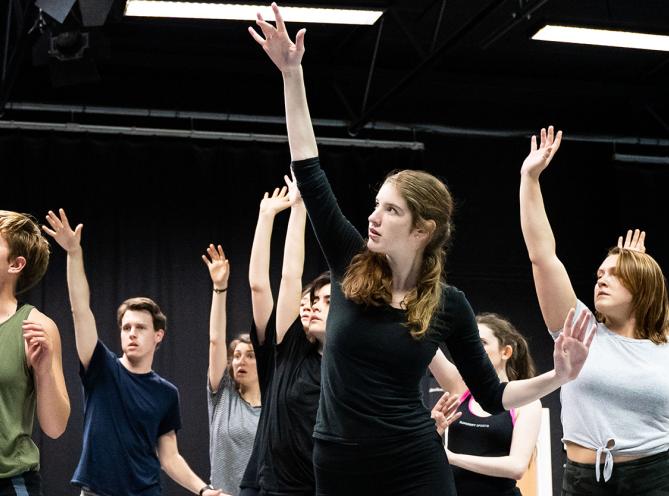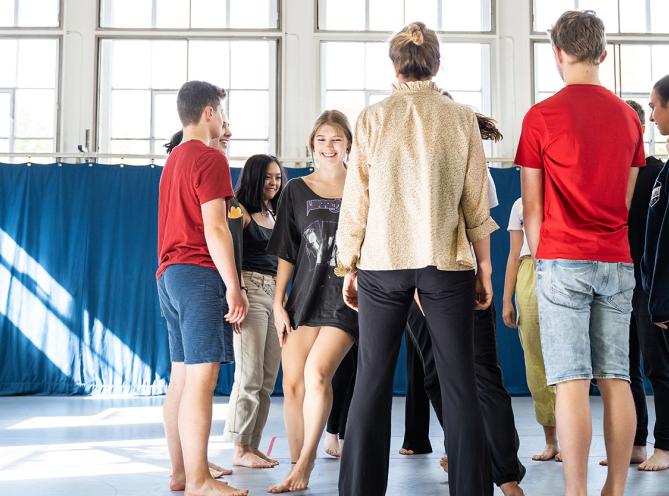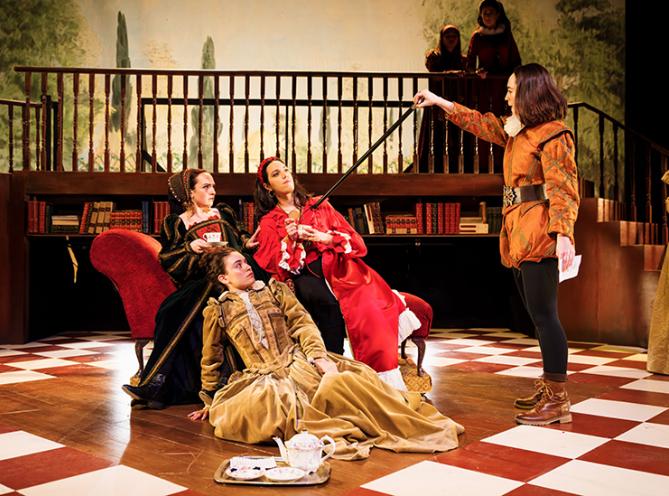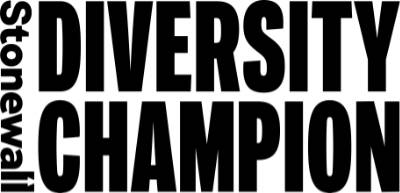Movement at LAMDA
Acting happens from and through the actor's body. It is a physical activity.
In Theatre, film, tv and even radio, actors use their bodies all the time from being able to be still and have presence, to move as different characters and adapt to different theatre and spaces. Movement is integrated into the timetable at LAMDA as part of the acting courses on offer.
Actors need to be able to navigate complicated sets, adapt to wear costumes, shoes and wigs that influence movement, handle props and do all of this while managing their breath to be able to speak a complex text and inhabit a character fully. Finding the world of the play and working as an ensemble starts with movement.
Movement training at LAMDA comprises of these elements:
Work on a role - doing physical research on a character, exploring different spaces, mask work, chorus work and expression.
Dance - dance that belongs to the world of a play, learning different styles and their context.
Fight - dramatic fight, stage combat, different styles and armoury.
Day to day at LAMDA
Warming up
Every morning from 9:30-9:50 acting students have time to warm-up and get into their body. In first year, this time is lead by a movement practitioner in year 2 or 3 of the MFA and BA professional acting courses the warm ups are student or self-led in order to get ready for the day ahead. We consider this time one of the most important times to practice 'best professional practice' by showing up before the call time and getting ready for the work.

Movement classes
Movement classes explore fundamental and advanced dynamics that connect to expanding the acting body’s range of expression. In this discipline actors practice exercises, explorations and improvisations that improve your physical storytelling and practice their ability to transform into different characters. In movement classes we also practice the observation of the world around you and actor research by moving the body. Student actors will move like the elements, materials, animals and everything in life that can inform the work on a role or story. Our movement training comes from Lecoq, Trish Arnolds, Litz Pisk, Grotowsky and Laban heritage.

Movement support & movement direction
For acting projects and public-facing productions, the Head of Acting, Course Leader and Lead Practitioner in Movement consult the show’s Directors about each production’s needs. Different production needs are addressed through movement support, coaching, movement directing, choreography, fight direction and intimacy coordination.
The movement team also attend sharings and performances and then provide feedback through marking and feedback in 1:1 tutorials.

LAMDA students work on different disciplines that complement each other
Awareness through movement (ATM)
Awareness Through Movement(ATM) classes use slow, mindful movements to achieve powerful effects in terms of strength, flexibility, and holistic integration of body and mind. Unique to the Feldenkrais Method® of somatic education is that these lessons tie directly into functional movements of daily life, such as walking efficiently, safely lifting objects, and improving one’s posture in sitting or standing. ATM is based on the Feldenkrais method with LAMDA’s unique approach to its application to actor work.
Movement Theatre & Auto-cours
Movement theatre classes explore different territories of theatre by improvising and creating in those styles. Students are asked to work on their own or in a company to devise, create and physicalise in different theatrical styles like: heightened naturalism, physical storytelling, parody, grotesque, clown, commedia dell’arte and melodrama. Actors are also given the space to develop and create in their own style. Movement Theatre classes are lead by experienced practitioners, whilst Auto-cours classes are self-led with guidance from the movement team.
Dance
Students will discover and practice different dance styles from different times and spaces. Learning dance is a way for actors to experience different ways of moving and expand their range of expression as well as working on the body’s stamina, flexibility, mobility and strength. Dance work will culminate in a Musical Theatre project in second year in which actors will use their singing and dancing skills. Throughout the training journey there will be plenty of opportunities to apply dance and choreography skills in all the acting projects and productions.
Fight
Students will practice different styles of fight and explore the dramatic application of combat in storytelling. In a rehearsal-like environment, students will create solo, with a partner or in a group. Fight at LAMDA also has extra-hours as an elective discipline in which students can enrol to continue to develop in being part of the regular fight nights and fight exams.
Interested in training at LAMDA?
Explore our undergraduate and postgraduate courses




